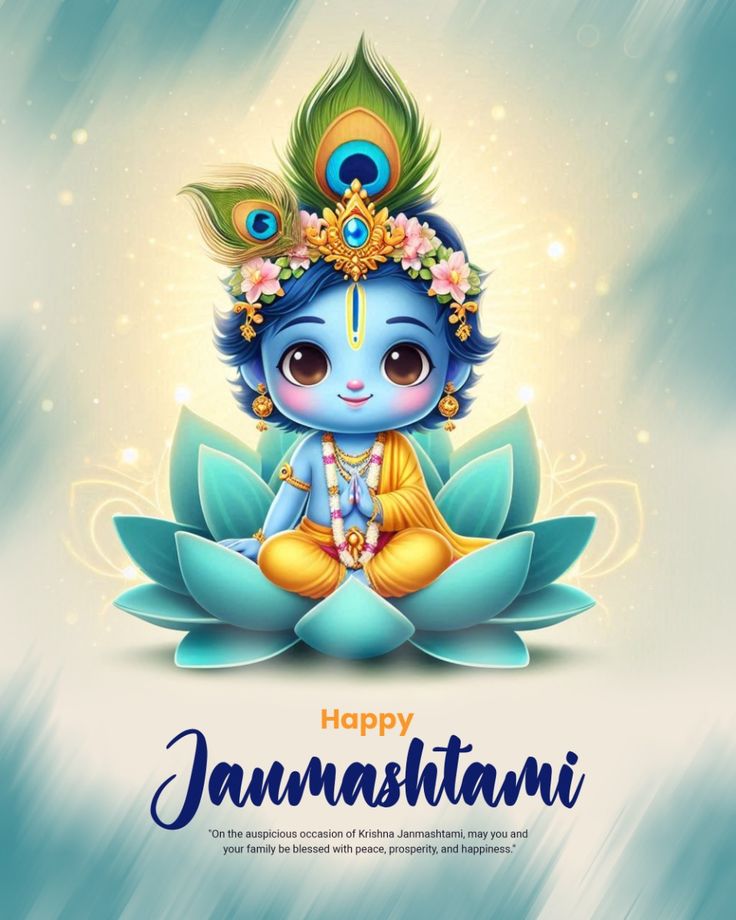pic credit: Pinterest
26 Aug 2024: Janmashtami, one of the most loved and extensively celebrated fairs in India, marks the start of Lord Krishna, the 8th incarnation of Lord Vishnu. This auspicious event, filled with devotion and joyful celebration, is determined on the eighth day (Ashtami) of the dark fortnight inside the Hindu month of Bhadrapada, which usually falls in August or September in keeping with the Gregorian calendar. Across the United States of America, Janmashtami isn’t just a spiritual observance but a colorful cultural pageant that unites groups in a shared party of devotion, pleasure, and spirituality.
The importance of Janmashtami extends beyond its nonsecular roots, resonating deeply with the cultural cloth of India. Lord Krishna, revered as an image of affection, knowledge, and divine play (Leela), is at the coronary heart of this celebration. The pageant is specifically grand within the towns of Mathura and Vrindavan, which keep a special place in Krishna’s childhood. In those historical locations, the competition takes on a paranormal ecosystem, with the complete area coming alive with the sounds of bhajans (devotional songs), hymns, and the continuous chanting of Krishna’s name. The streets are adorned with colorful decorations, and temples are illuminated with lighting, growing a spiritual ambiance that is both uplifting and serene.
As the day progresses, the anticipation of Krishna’s delivery builds up, culminating at midnight, the moment believed to be when Krishna was born. Devotees examine an afternoon-long fast, abstaining from food and water, to honor the start of the deity. This speed is historically broken handiest after the nighttime rituals, which consist of the reenactment of Krishna’s beginning. Temples and houses alike are meticulously decorated with plant life, leaves, and lighting fixtures, and the ecosystem is charged with devotion as the instant of Krishna’s divine arrival approaches.
One of the most charming and joyous traditions of Janmashtami is the ‘Dahi Handi’ event, a celebration that reflects the playful and mischievous nature of Krishna as a toddler. The occasion is stimulated with the aid of the tales of young Krishna, who became acknowledged for stealing butter from pots hung high within the homes of Gokul. To commemorate this, pots filled with curd, butter, or other dairy products are hung high above the streets, regularly between homes or on poles. Groups of young guys, called Govindas, form human pyramids to attain and break those pots, at the same time as the gang cheers them on. The Dahi Handi event is a spectacle of teamwork, strength, and network spirit, embodying the playful electricity of Krishna and the solidarity of the people.
Another extensive element of the Janmashtami birthday celebration is the ‘Rasa Lila,’ a conventional dance-drama that vividly portrays the existence and divine love of Krishna. Performed specifically in areas like Vrindavan, the Rasa Lila reenacts episodes from Krishna’s younger days, in particular his interactions with the Gopis (milkmaids) and his beloved Radha. These performances are an awful lot more than mere entertainment; they may be nonsecular expressions that carry the teachings of Krishna, specializing in themes of affection, devotion, and the everlasting bond between the divine and the human. Through the Rasa Lila, members and spectators alike are reminded of Krishna’s teachings and the profound nonsecular messages embedded in his playful antics and divine actions.
The culinary factor of Janmashtami is also a key part of the celebrations. Devotees put together a lot of chocolates and dishes to offer to Krishna as a part of the ritual worship. Some of the maximum popular services encompass ‘Makhan Misri’ (butter mixed with sugar), ‘Panchamrit’ (a combination of milk, curd, honey, ghee, and sugar), and candy cuisine like ‘Rasmalai,’ ‘Kheer,’ and ‘Peda.’ These services, after being blessed at some stage in the puja, are dispensed as ‘Prasad’ by many of the devotees, symbolizing the sharing of divine benefits and the communal pleasure that the pageant brings.
Janmashtami, in its essence, transcends mere ritualistic observance, evolving right into a profound communal and nonsecular enjoyment. It is an afternoon when thousands and thousands of devotees open their hearts and homes to rejoice in the divine presence of Krishna. The competition is a lovely combination of spirituality, way of life, and joy, reflecting the timeless values that Krishna embodied—love, compassion, and the joy of residing in concord with others.
As the pageant is well known throughout India, it will rich cultural range and the enduring spirit of its humans. Janmashtami is greater than just a commemoration of the start of a deity; it’s miles a celebration of life, love, and the divine connection that binds all of advent. The pageant captures the essence of Indian tradition and spirituality, reminding us of the everlasting presence of the divine in our normal lives.
In celebrating Janmashtami, devotees no longer most effectively honor the delivery of Krishna but additionally embrace the teachings and virtues he stood for, making this competition a divine birthday celebration that continues to inspire and uplift the hearts of tens of millions.






+ There are no comments
Add yours